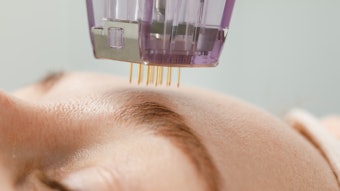
New guidelines for the management of adults with atopic dermatitis using phototherapy and systemic therapies were published in the Journal of the American Academy of Dermatology (JAAD), The new update is the first since the 2014 recommendations for atopic dermatitis management in patients who do not respond to topical therapies.
After a comprehensive review, researchers strongly recommended the use of dupilumab, tralokinumab, baricitinib, abrocitinib and upadacitinib; conditionally recommended phototherapy, cyclosporine, methotrexate, azathioprine and mycophenolate and did not recommend systemic corticosteroids.
The updated AAD guidelines also noted that there is insufficient data to recommend the use of PUVA phototherapy, systemic antibiotics, oral antihistamines, montelukast, apremilast, ustekinumab, intravenous immunoglobulin, interferon-gamma, omalizumab, tumor necrosis-alpha inhibitors, systemic calcineurin inhibitors (other than cyclosporine) or mepolizumab for the treatment of atopic dermatitis.
Related: Why Allergic Atopic Dermatitis is Underdiagnosed
The systematic evidence review process included identifying and prioritizing clinical questions and outcomes, completing systematic retrieval and assessment of evidence and assessing the certainty of the evidence and formulation of recommendations using Grading of Recommendations, Assessment, Development and Evaluation. Evidence of the effectiveness and safety of phototherapy and systemic therapies was determined from systematic reviews and meta-analyses of randomized controlled trials. A patient representative was also included in the workgroup to provide patient preferences and opinions, per reporting from Dermatology Times.
Phototherapy
According to the review, phototherapy using UV radiation is effective for skin conditions such as psoriasis, atopic dermatitis and cutaneous lymphomas. Narrowband UVB is the most widely used form of phototherapy, per the study. Researchers did not include the use of PUVA in its recommendations due to insufficient evidence.
The potential adverse effects of phototherapy identified in the study include sunburn-like reactions, intolerance due to heat from the light source and the risk of skin cancer due to UV radiation exposure.
Monoclonal Antibodies
Dupilumab and tralokinumab are both FDA-approved biologics for the treatment of atopic dermatitis in adults, with overall strong efficacy and safety data. According to the research, dupilumab at standard dosing (600 mg subcutaneously at initiation, then 300 mg every 2 weeks) is slightly less efficacious than higher doses of JAK inhibitors but has better efficacy than abrocitinib 100 mg daily and comparable efficacy to upadacitinib 15 mg daily.
Tralokinumab at standard dosing (600 mg at initiation followed by 300 mg every 2 weeks) significantly improved the signs and symptoms of atopic dermatits and quality of life in multiple clinical trials and had no major safety signals, similar to dupilumab, according to the study. While the researchers did recommend both dupilumab and tralokinumab, the recommendation was downgraded to moderate certainty due to statistical inconsistency in adverse events analyses. Conjunctivitis is commonly observed with both dupilumab and tralokinumab, according to Dermatology Times.
JAK Inhibitors
Upadacitinib and abrocitinib are two selective JAK inhibitors approved for the treatment of patients with moderate to severe atopic dermatitis who have failed other systemic therapies such as immunosuppressants, corticosteroids, antimetabolitesand injectable biologics, and in most cases, upadacitinib and abrocitinib are not commonly considered first-line systemic therapies, per the study.
Higher doses of upadacitinib (30 mg daily)and abrocitinib (200 mg daily) showed the highest efficacy at reducing EASI scores up to 16 weeks compared to all currently available treatments in a network meta-analysis, and the two inhibitors were superior to dupilumab in head-to-head clinical trials, per the study.
The ADD guidelines emphasize that it is important for clinicians to be aware of the risks associated with JAK inhibitors, but those risks should not scare clinicians away from prescribing JAKs. The analysis additionally recommended that clinicians should encourage shingles vaccines for older patients before beginning JAK inhibitors. Clinicians should perform a complete blood count with differential, liver enzymes at baseline (and after initiation or dose-escalation), lipids after initiation and testing for viral hepatitis, tuberculosis and pregnancy, per ADD guidelines.
Antimetabolites and Immunosuppressants
Cyclosporine, methotrexate, azathioprine and mycophenolate were conditionally recommended by the AAD guidelines based on low or very low certainty evidence. Evidence was downgraded for risk of bias and imprecision due to small sample sizes, according to the report. Head-to-head clinical trials produced similar results, but network meta-analysis found cyclosporine dosed between 3 and 5 mg/kg per day is more effective than methotrexate and azathioprine and there is even less randomized trial evidence supporting the use of mycophenolate,
Cyclosporine, methotrexate, azathioprine, and mycophenolate require baseline and ongoing laboratory monitoring for adverse effects. Cyclosporine is commonly associated with renal impairment and hypertension, methotrexate is associated with liver damage, and azathioprine and mycophenolate are associated with cytopenias, according to Dermatology Times.
Future Studies
Researchers note that more data is necessary to solidify the benefits of phototherapy and comparing phototherapy to other treatments such as systemic therapies would provide additional clarity.
The updated AAD Guidelines stated that all atopic dermatitis clinical trials should include core outcome measures from the Harmonizing Outcomes Measures for Eczema (HOME) group, including EASI (Eczema Area Severity Index), Patient Oriented Eczema Measure (POEM), 24-hour Peak Pruritus Numeric Rating Scale (PP-NRS), Dermatology Life Quality Index (DLQI) and either the Recap of Atopic Eczema (RECAP) or Atopic Dermatitis Control Tool (ADCT).











